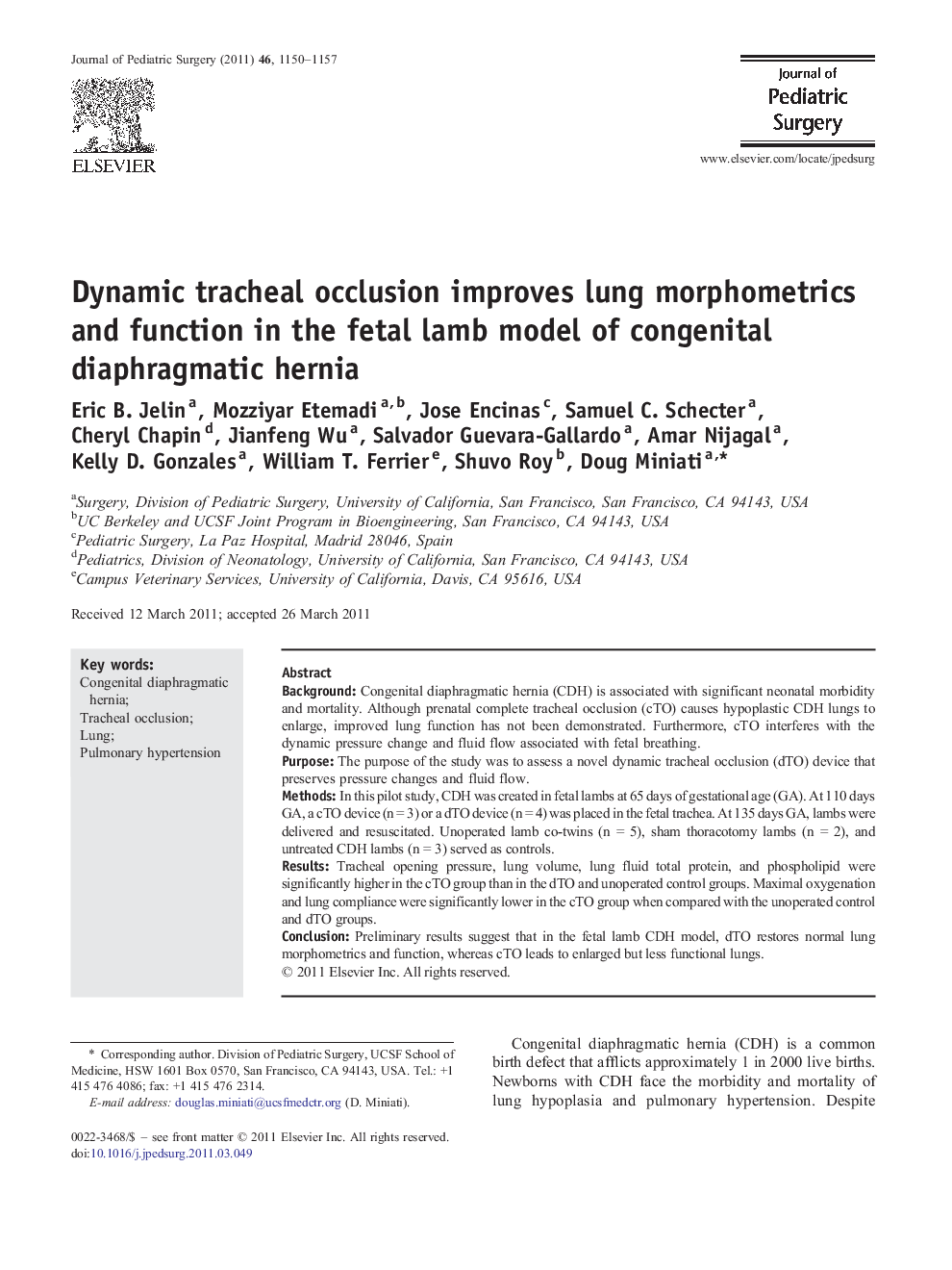| کد مقاله | کد نشریه | سال انتشار | مقاله انگلیسی | نسخه تمام متن |
|---|---|---|---|---|
| 4157088 | 1273786 | 2011 | 8 صفحه PDF | دانلود رایگان |

BackgroundCongenital diaphragmatic hernia (CDH) is associated with significant neonatal morbidity and mortality. Although prenatal complete tracheal occlusion (cTO) causes hypoplastic CDH lungs to enlarge, improved lung function has not been demonstrated. Furthermore, cTO interferes with the dynamic pressure change and fluid flow associated with fetal breathing.PurposeThe purpose of the study was to assess a novel dynamic tracheal occlusion (dTO) device that preserves pressure changes and fluid flow.MethodsIn this pilot study, CDH was created in fetal lambs at 65 days of gestational age (GA). At 110 days GA, a cTO device (n = 3) or a dTO device (n = 4) was placed in the fetal trachea. At 135 days GA, lambs were delivered and resuscitated. Unoperated lamb co-twins (n = 5), sham thoracotomy lambs (n = 2), and untreated CDH lambs (n = 3) served as controls.ResultsTracheal opening pressure, lung volume, lung fluid total protein, and phospholipid were significantly higher in the cTO group than in the dTO and unoperated control groups. Maximal oxygenation and lung compliance were significantly lower in the cTO group when compared with the unoperated control and dTO groups.ConclusionPreliminary results suggest that in the fetal lamb CDH model, dTO restores normal lung morphometrics and function, whereas cTO leads to enlarged but less functional lungs.
Journal: Journal of Pediatric Surgery - Volume 46, Issue 6, June 2011, Pages 1150–1157